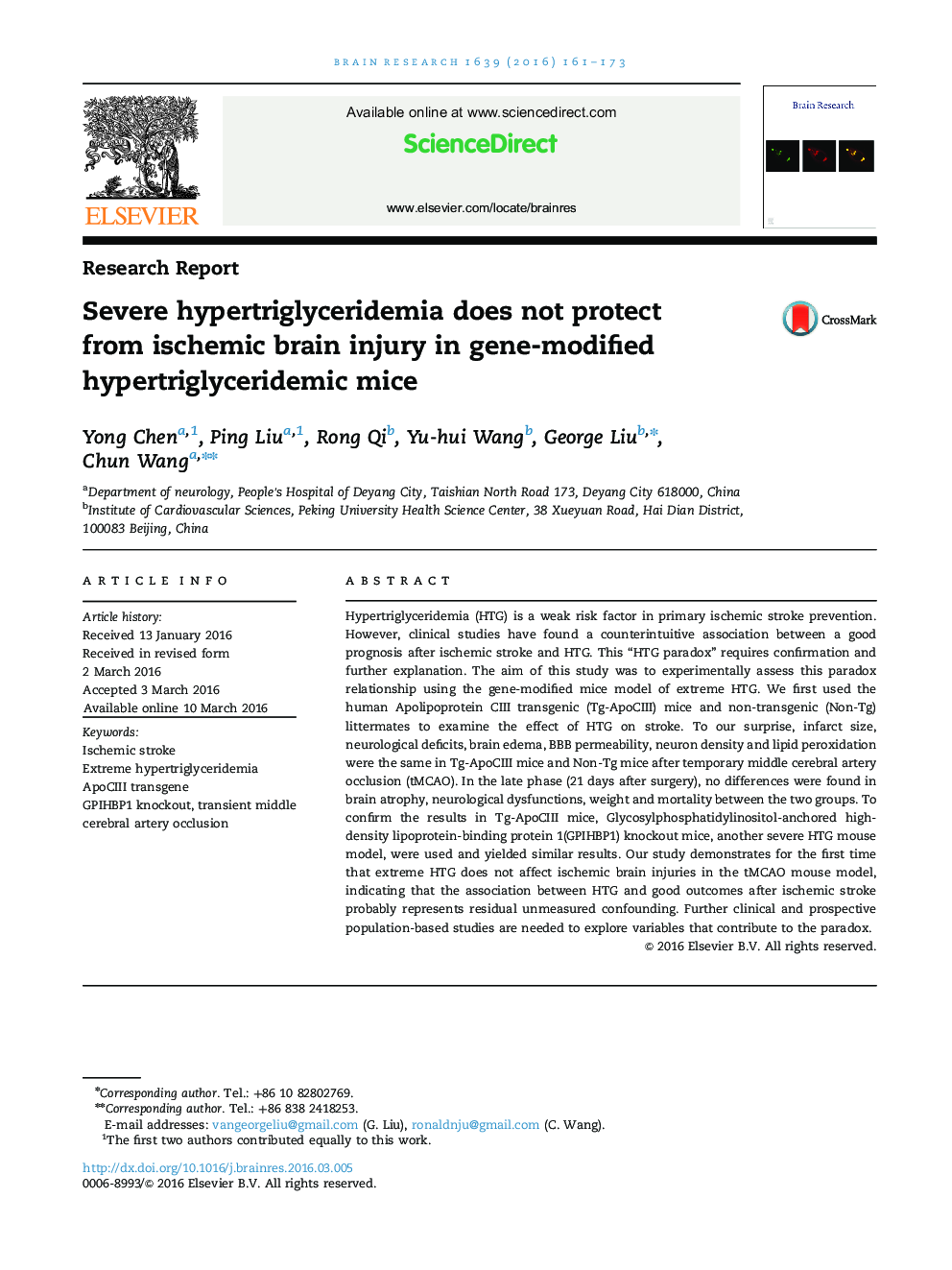| کد مقاله | کد نشریه | سال انتشار | مقاله انگلیسی | نسخه تمام متن |
|---|---|---|---|---|
| 6262584 | 1613802 | 2016 | 13 صفحه PDF | دانلود رایگان |
- Hypertriglyceridemia (HTG) are found to relate to good outcomes after ischemic stroke.
- This HTG paradox was evaluated in two gene-modified mouse models of HTG.
- Our results showed that HTG had no effect on brain ischemia-reperfusion injury.
- HTG paradox probably represents residual unmeasured confounding factors.
Hypertriglyceridemia (HTG) is a weak risk factor in primary ischemic stroke prevention. However, clinical studies have found a counterintuitive association between a good prognosis after ischemic stroke and HTG. This “HTG paradox” requires confirmation and further explanation. The aim of this study was to experimentally assess this paradox relationship using the gene-modified mice model of extreme HTG. We first used the human Apolipoprotein CIII transgenic (Tg-ApoCIII) mice and non-transgenic (Non-Tg) littermates to examine the effect of HTG on stroke. To our surprise, infarct size, neurological deficits, brain edema, BBB permeability, neuron density and lipid peroxidation were the same in Tg-ApoCIII mice and Non-Tg mice after temporary middle cerebral artery occlusion (tMCAO). In the late phase (21 days after surgery), no differences were found in brain atrophy, neurological dysfunctions, weight and mortality between the two groups. To confirm the results in Tg-ApoCIII mice, Glycosylphosphatidylinositol-anchored high-density lipoprotein-binding protein 1(GPIHBP1) knockout mice, another severe HTG mouse model, were used and yielded similar results. Our study demonstrates for the first time that extreme HTG does not affect ischemic brain injuries in the tMCAO mouse model, indicating that the association between HTG and good outcomes after ischemic stroke probably represents residual unmeasured confounding. Further clinical and prospective population-based studies are needed to explore variables that contribute to the paradox.
Journal: Brain Research - Volume 1639, 15 May 2016, Pages 161-173
